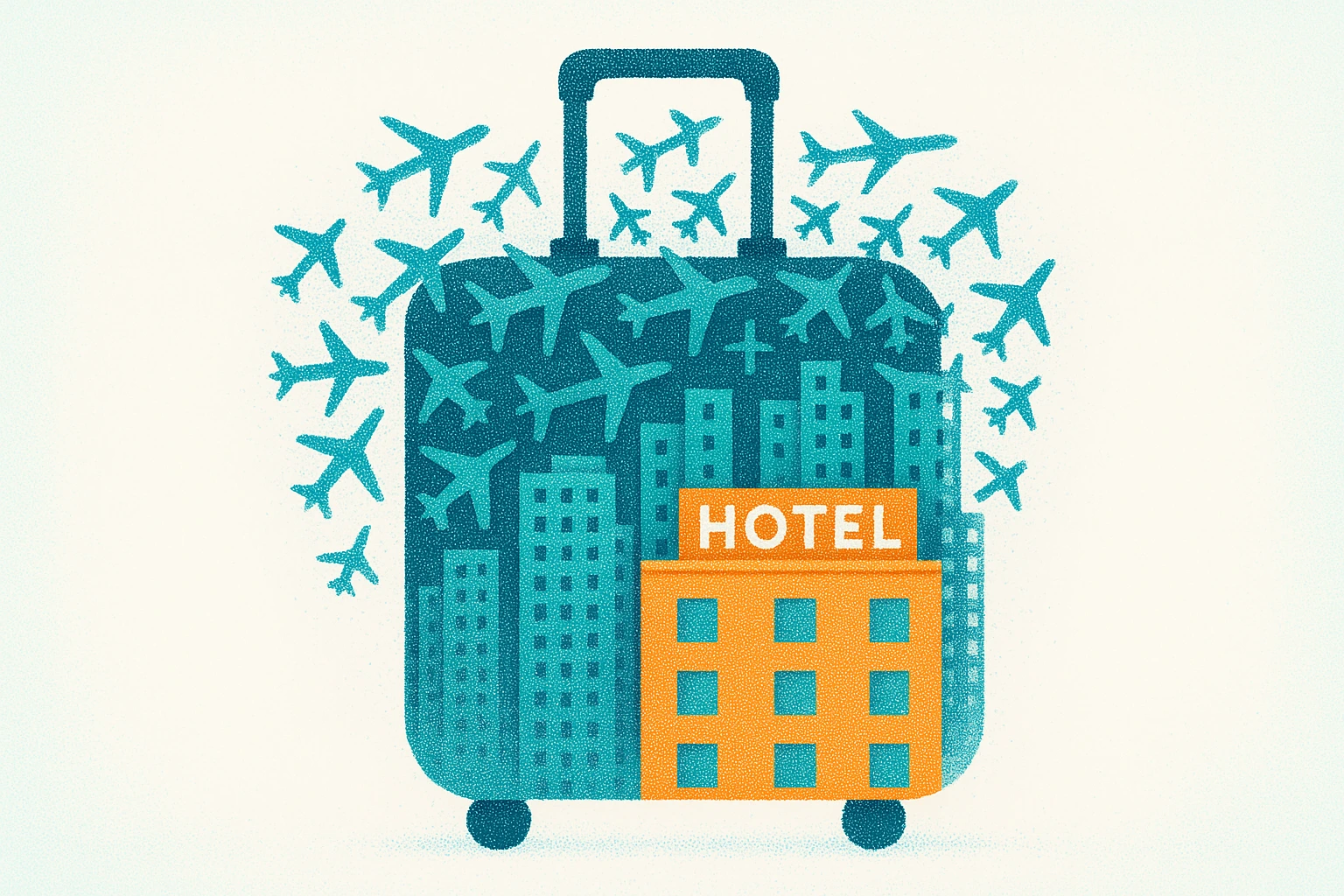Corporate Travel Policy Template for Growing Companies
Corporate travel policy template with booking guidelines, expense limits, and automation tips. Cut costs and save time.

A corporate travel policy provides business travelers with consistent rules for booking flights, hotels, and managing expenses. Even if you only manage trips for yourself or a small team, these rules help keep costs predictable, ensure everyone stays safe, and make travel less stressful.
This article provides a ready-to-use corporate travel policy template, practical steps for implementing it at your company, and shows how automation can simplify enforcement without adding manual work.
What Is a Corporate Travel Policy Template?
A corporate travel policy template is a pre-built set of guidelines that defines how business travelers plan, book, and expense work trips. It answers questions like: What expenses can I claim? Where do I book? Can I make exceptions? Templates let businesses create a working policy fast instead of writing guidelines from scratch.
Companies use corporate travel policies to:
- Control spending on flights, hotels, meals, and transportation
- Give employees clarity on business travel management
- Uphold duty of care by setting clear safety and emergency procedures
- Prevent booking mistakes and speed up expense approvals
Without a policy, companies risk overspending, confusion, or issues if employees run into trouble on the road.
Example Corporate Travel Policy Template
Here's a detailed template you can adapt for your company. Each section explains what it does and what you need to include.
1. Purpose and Scope
Define who the policy applies to and when they need to follow it. This sets expectations up front so everyone knows if the policy covers their trip. The first section in the policy should cover:
- Covered roles: full-time staff, consultants, contractors
- Trip types: business meetings, conferences, training, project work
- Geographic scope: domestic, international, specific regions
- Exclusions: personal trip add-ons, vacation extensions
2. Booking Guidelines
Set out where to book, when to book, and which vendors to use. These guidelines prevent last-minute bookings and keep costs predictable. The guidelines should specify:
- Approved booking platforms: company portal, preferred travel agency, specific tools
- Advance booking windows: how far ahead to book flights and hotels
- Preferred partners: airlines and hotels where you've negotiated rates
- Group booking requirements and upgrade approval processes
- How to use loyalty programs and travel points
3. Expense Categories and Limits
Define allowable expenses and their limits. This controls costs and eliminates guesswork when travelers plan trips. This section should list:
- Approved expense types: airfare, hotels, ground transport, meals
- Maximum rates or per diem amounts by category and location
- Restrictions on upgrades, alcohol, and entertainment
- Policies for incidentals: Wi-Fi, parking, baggage fees
- Process for requesting exceptions when you need to exceed limits
4. Reimbursement Process
Explain how to claim expenses, what documentation travelers need, and when they can expect reimbursement. This speeds up payments and prevents confusion. Your process should outline:
- How to submit expense reports: required forms and submission channels
- Submission deadline: typically within 14 days of trip completion
- Required documentation: original receipts, itinerary, approval emails
- Approval process: who reviews expenses and signs off
- Payment timeline: when reimbursement hits your account after approval
5. Safety and Emergency Details
Set safety standards and emergency procedures that protect travelers and reduce risks like medical emergencies, travel disruptions, and security threats. Your safety protocols should include:
- Requirement to share itineraries with your manager or travel team
- Emergency contact numbers: internal contacts and external support lines
- Health and safety guidance: insurance coverage, required vaccinations, travel advisories
- Procedures for travel disruptions or emergencies
- How to document and report incidents
6. Review and Update Cycles
Commit to regular policy reviews. This keeps guidelines current as your company grows and travel needs change. Your review process should establish:
- Review frequency: annually or after major business changes
- Who owns updates: specific person or team responsible
- Process for collecting employee feedback
- Method for communication changes to the business travelers
Corporate Travel Policy Best Practices
Corporate travel policies should evolve as your business grows, travel patterns shift, and employee needs change. Here are some best practices to follow when creating your own policy:
Write in plain language. Use simple, everyday words that anyone can understand without a finance or legal background. If an employee needs to look up a term or read a sentence twice, rewrite it.
Train people before you expect compliance. Regular training sessions help explain the rules, their purpose, and provide opportunities for feedback. Employee input during training helps catch problems like confusing rules or unrealistic spending limits before they lead to policy violations.
Build in exception approval processes. Effective policies include clear procedures for when employees need to exceed limits, like booking last-minute flights for urgent client meetings or staying at the conference hotel despite higher rates. Managers can approve these exceptions without escalating to finance for every decision.
How Automation Simplifies Corporate Travel Policies
Automated tools enforce policy rules during booking instead of after the fact. This prevents non-compliant bookings before they happen, rather than catching violations weeks later during expense review when employees have already paid for out-of-policy hotels or flights.
Otto the Agent is an AI-powered travel agent that integrates corporate travel policies directly into bookings. Otto applies policy rules during the booking process by highlighting compliant options, flagging out-of-policy bookings, and organizing receipts. This reduces manual work for travelers and managers while cutting down on booking errors and expense tracking issues. Try Otto today: it’s free for business travelers and, unlike corporate travel management solutions, it’s built with solo operators and small teams in mind.



